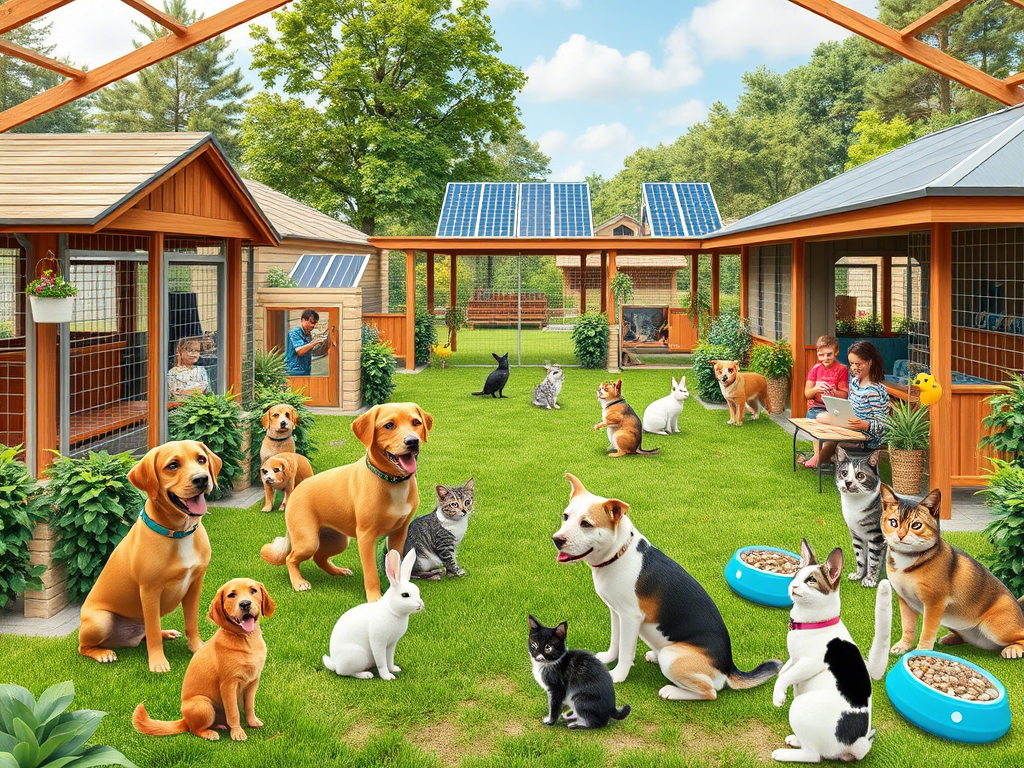Step-by-Step Buyer’s Insights for Digital Pet Farming
1. Identify High-Demand Niches
- Research trending breeds (e.g., micro pigs, Bengal cats, exotic reptiles).
- Use Google Trends & pet marketplace data (e.g., PuppyFind, Hoobly).
2. Choose the Right Digital Tools
- AI Breeding: Basepaws, Embark Vet
- IoT Monitoring: Petkit, SurePetCare
- E-Commerce: Shopify, WooCommerce (for custom stores)
3. Optimize for Online Sales
- High-quality photos & videos (360-degree views).
- Transparent health records & live video calls with buyers.
4. Leverage Automation
- Chatbots for FAQs (ManyChat, Tidio).
- Automated feeding & cleaning systems to reduce labor costs.
5. Scale with Digital Marketing
- Facebook/Google Ads targeting pet lovers.
- TikTok/Reels for organic reach.
- Email Marketing for repeat buyers (Klaviyo, Mailchimp).
FAQs: Digital Pet Farming in 2025
Q1: Is digital pet farming legal?
Yes, but regulations vary by country. Always check:
- Breeding licenses
- Animal welfare laws
- Online sales tax requirements
Q2: How much can I earn with digital pet farming?
- Small-scale: 2,000–2,000–10,000/month (e-commerce + social media).
- Large-scale: $50,000+/month (AI breeding + IoT automation).
Q3: What’s the biggest risk?
- High competition in popular breeds.
- Tech failures (IoT/AI dependency).
Q4: Do I need a physical farm?
Not always! Some models (NFT pets, virtual training) are 100% digital.
Q5: How do I attract international buyers?
- Use multilingual websites.
- Partner with global pet transporters.
- Accept crypto payments for NFT pets.
Final Thoughts
The future of pet farming is digital. By integrating AI, IoT, e-commerce, and social media, breeders can maximize profits while meeting modern buyer expectations. Start small, test strategies, and scale with automation for long-term success.
The pet industry is booming, with global revenues projected to exceed $350 billion by 2027 . As pet ownership rises, entrepreneurs are leveraging digital innovations to tap into lucrative niches. This guide explores cutting-edge digital techniques for profitable pet farming in 2025, actionable buying steps, and strategies to maximize ROI. From AI-driven tools to smart pet products, we break down the essentials for success.
1. Top Digital Techniques Revolutionizing Pet Farming in 2025
A. Tech-Integrated Pet Care Products
- GPS Pet Trackers
- Functionality: Real-time location tracking and geofencing alerts via smartphone apps.
- Profit Potential: High demand due to pet safety concerns; compatible with Apple AirTags for seamless integration .
- Example: Devices like Fi Collar (sales growth: 30% YoY).
- Smart Feeders
- Features: Wi-Fi-enabled portion control and scheduling.
- Market Growth: Expected CAGR of 9.5% in the digital pet care sector .
- Supplier Tip: Partner with manufacturers like PetSafe or use platforms like Alibaba for bulk orders.
- QR Code Pet ID Tags
- Innovation: Laser-engraved QR codes linked to customizable pet profiles (medical history, owner contacts).
- Case Study: A business using QRCodeChimp saw a 50% revenue boost by selling these tags .

B. AI and Data-Driven Solutions
- Predictive Analytics: AI tools forecast pet health trends and consumer preferences. For example, apps in Brazil use AI to predict frost events, aiding pet farmers in proactive care .
- Chatbots: Automate customer queries for pet product sales or grooming bookings.
C. E-Commerce and Omnichannel Retail
- POS Systems: Platforms like eTailPet streamline inventory management, supplier access, and sales reporting for pet stores .
- Print-on-Demand Merchandise: Custom pet accessories (e.g., collars, bandanas) via Shopify or Wix, with no inventory costs .
D. SEO and Content Marketing
- Voice Search Optimization: Target phrases like “best organic dog food near me” .
- Video Content: Tutorials on pet grooming or product unboxings boost engagement by 40% .
2. Step-by-Step Buyer’s Guide for Implementing Digital Techniques
Step 1: Identify Your Niche
- Research Trends: Use Google Trends and AI tools like SEMrush to pinpoint high-demand niches (e.g., eco-friendly pet products or senior pet care) .
- Example: The organic pet food market is growing at 12% CAGR .
Step 2: Source Products and Tools
- GPS Trackers/Smart Feeders:
- Suppliers: Alibaba (budget-friendly) or PetTech manufacturers.
- Cost: $50–$200 per unit; margins up to 60% .
- QR Code Tags:
- Tools: QRCodeChimp for bulk generation; outsource laser engraving to vendors .
Step 3: Build an Online Presence
- E-Commerce Platforms:
- Shopify: Ideal for dropshipping pet products; integrates with Printify for custom merch .
- Wix: User-friendly for small businesses; offers SEO plugins .
- Local SEO: List your business on directories like Pet Business Network for visibility .
Step 4: Implement Marketing Strategies
- Social Media Ads: Use Instagram Reels to showcase products; target pet owners aged 25–45.
- Email Campaigns: Offer discounts on pet grooming kits for subscribers .
Step 5: Analyze and Optimize
- Metrics: Track customer retention rates and cart abandonment via Google Analytics.
- A/B Testing: Experiment with pricing models (e.g., subscription boxes for pet treats) .
3. Case Studies: Success Stories in Digital Pet Farming
Case 1: QR Code ID Tags
- Business Model: Sold customizable tags via Etsy and Shopify.
- Result: $60K/month revenue using QRCodeChimp .
Case 2: AI-Driven Pet Blog
- Strategy: Used AI tools for keyword research and content personalization.
- Outcome: 200% traffic growth in 6 months .

4. Profitability Analysis: Tables and Metrics
Table 1: Top Digital Pet Products for 2025
| Product | Startup Cost | Profit Margin | Key Features | Supplier Platform |
|---|---|---|---|---|
| GPS Trackers | $1,000 | 55% | Geofencing, app integration | Alibaba, PetSafe |
| Smart Feeders | $800 | 50% | Wi-Fi control, portion sizing | PetTech Manufacturers |
| QR Code ID Tags | $500 | 70% | Custom profiles, durability | QRCodeChimp, Etsy |
| Organic Pet Treats | $1,200 | 45% | Eco-friendly packaging | Local co-ops, Shopify |
Table 2: ROI Comparison by Technique
| Technique | Initial Investment | Annual Revenue Potential | Break-Even Period |
|---|---|---|---|
| E-Commerce Store | $2,000 | $120,000 | 6 months |
| Pet Blog + Affiliate | $300 | $50,000 | 3 months |
| Smart Product Retail | $5,000 | $200,000 | 9 months |
5. Challenges and Solutions
- High Initial Costs: Lease equipment or use crowdfunding platforms like Kickstarter.
- Data Privacy: Comply with GDPR by encrypting customer data in AI tools .
- Market Saturation: Differentiate with hyper-localized services (e.g., “VIP pet daycare” with live cams).
Conclusion
The fusion of technology and pet care in 2025 offers unprecedented opportunities. By adopting AI, smart products, and omnichannel retail, entrepreneurs can tap into a $350 billion market. Start small, leverage data-driven strategies, and prioritize customer engagement to build a thriving pet farming business.
